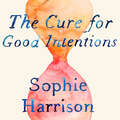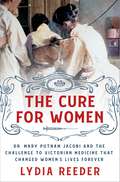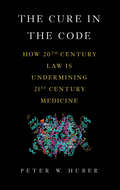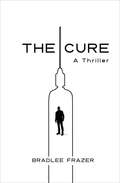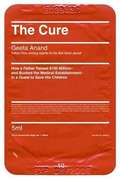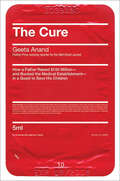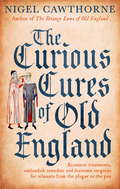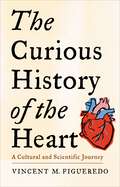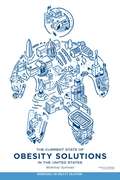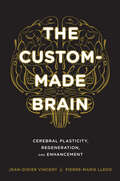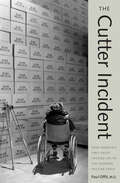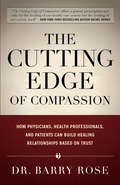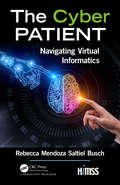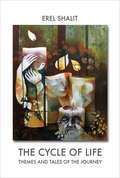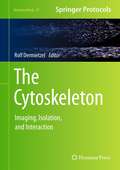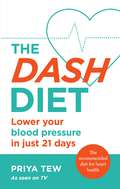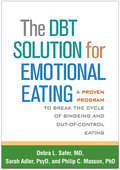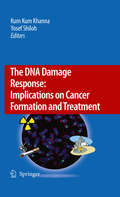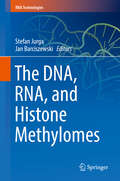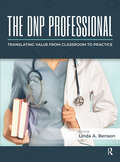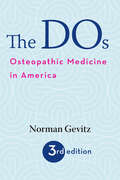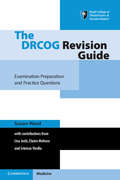- Table View
- List View
The Cure for Good Intentions: A Doctor's Story
by Sophie Harrison'When I was twenty-eight I trained as a doctor. Initially everyone was interested. Amazing! people said, when I told them. What made you do that? I couldn't find a short answer. Sometimes I said, "I had a revelation on a beach." It was partly true'The Cure for Good Intentions is about a life-changing decision. Sophie gave up her job as an editor at a prestigious literary magazine and put herself through medical school and hospital training before eventually becoming a GP. From peaceful office days spent writing tactful comments on manuscripts she entered a world that spoke an entirely different language. She was now inside scenes familiar from television and books - long corridors, busy wards, stern consultants, anxious patients - but what was her part in it all? Back in the community as a brand-new GP, the same question grew ever more pressing.This is a book about how a doctor is made: it asks what a doctor does, and what a doctor is. What signifies a doctor: a caring-yet-brisk bedside manner? A mode of dress? A stethoscope? A firm way with a prescription pad? What is empathy, and what does it achieve? How do we deal with pain, our own and other people's? The Cure is an outsider's look at the inside of a profession that has never been so scrutinised, or so misunderstood.
The Cure for Women: Dr. Mary Putnam Jacobi and the Challenge to Victorian Medicine That Changed Women's Lives Forever
by Lydia Reeder“Valiant and timely ... ‘The Cure for Women’ reintroduces its subject as a hero for this moment.” —The New York TimesHow Victorian male doctors used false science to argue that women were unfit for anything but motherhood—and the brilliant doctor who defied themAfter Elizabeth Blackwell became the first woman to graduate from medical school, more women demanded a chance to study medicine. Barred entrance to universities like Harvard, women built their own first-rate medical schools and hospitals. Their success spurred a chilling backlash from elite, white male physicians who were obsessed with eugenics and the propagation of the white race. Distorting Darwin’s evolution theory, these haughty physicians proclaimed in bestselling books that women should never be allowed to attend college or enter a profession because their menstrual cycles made them perpetually sick. Motherhood was their constitution and duty.Into the midst of this turmoil marched tiny, dynamic Mary Putnam Jacobi, daughter of New York publisher George Palmer Putnam and the first woman to be accepted into the world-renowned Sorbonne medical school in Paris. As one of the best-educated doctors in the world, she returned to New York for the fight of her life. Aided by other prominent women physicians and suffragists, Jacobi conducted the first-ever data-backed, scientific research on women's reproductive biology. The results of her studies shook the foundations of medical science and higher education. Full of larger than life characters and cinematically written, The Cure for Women documents the birth of a sexist science still haunting us today as the fight for control of women’s bodies and lives continues.
The Cure in the Code: How 20th Century Law is Undermining 21st Century Medicine
by Peter W. HuberNever before have two revolutions with so much potential to save and prolong human life occurred simultaneously. The converging, synergistic power of the biochemical and digital revolutions now allows us to read every letter of life's code, create precisely targeted drugs to control it, and tailor their use to individual patients. Cancer, diabetes, Alzheimer's and countless other killers can be vanquished-if we make full use of the tools of modern drug design and allow doctors the use of modern data gathering and analytical tools when prescribing drugs to their patients.But Washington stands in the way, clinging to outdated drug-approval protocols developed decades ago during medicine's long battle with the infectious epidemics of the past. Peter Huber, an expert in science, technology, and public policy, demonstrates why Washington's one-size-fits-all drug policies can't deal with diseases rooted in the complex molecular diversity of human bodies. Washington is ill-equipped to handle the torrents of data that now propel the advance of molecular medicine and is reluctant to embrace the statistical methods of the digital age that can. Obsolete economic policies, often rationalized as cost-saving measures, stifle innovation and suppress investment in the medicine that can provide the best cures at the lowest cost.In the 1980s, an AIDS diagnosis was a death sentence, until the FDA loosened its throttling grip and began streamlining and accelerating approval of life-saving drugs. The Cure in the Code shows patients, doctors, investors, and policy makers what we must now do to capture the full life-saving and cost-saving potential of the revolution in molecular medicine. America has to choose. At stake for America is the power to lead the world in mastering the most free, fecund, competitive, dynamic, and intelligent natural resource on the planet-the molecular code that spawns human life and controls our health.
The Cure: A Thriller
by Bradlee FrazerA medical thriller that asks: What if we had the cure for a catastrophic illness—but it lay hidden inside the blood and bones of just one man? A mysterious new contagion is decimating the population. It starts in the lungs, like the flu, then moves to the bones, where it weakens and breaks them, eventually killing the host. The disease&’s origin, methods of propagation, and means of contraction are all unknown. There is no vaccine, and none is expected, as the virus is protean and elusive. If it remains unchecked and mutates into a more virulent form, it will become an extinction level event. Jason Kramer has the disease, known by its nickname &“Trips Lite&”—the CDC doctor who discovered it was a fan of Stephen King&’s The Stand—but his body produces a unique antibody that kills the viruses inside him. This component in Jason&’s blood can be harvested and given to anyone who needs it. His blood can heal. But pharmaceutical magnate Phillip Porter needs to keep people believing that only his expensive drug cocktail will slow Trips Lite down, and so if there&’s any chance someone with the disease will live, Phillip must make sure that Jason does not . . . &“If Stephen King and Michael Crichton had written Double Indemnity, it would have been The Cure.&” —D.J. Butler, author of Rock Band Fights Evil
The Cure: How a Father Raised $100 Million--and Bucked the Medical Establishment--in a Quest to Save His Children
by Geeta AnandA Pulitzer Prize-winning journalist tracks the audacious efforts of a financial consultant who quit his job and created a biotechnology start-up company in an effort to turn science into a cure for his children's rare, fatal disease.
The Cure: How a Father Raised $100 Million—and Bucked the Medical Establishment—in a Quest to Save His Children
by Geeta Anand“Amazing….Explores human courage under the most trying circumstances.” —New York Post“An inspirational story about business, medical science, and one father’s refusal to give up hope.” —Boston GlobeThe book that inspired the movie, Extraordinary Measures, starring Harrison Ford, Brendan Fraser, and Keri Russell, The Cure by Pulitzer Prize-winning journalist Geeta Anand is the remarkable true story of one father’s determination to find a cure for his terminally sick children even if it meant he had to build a business from scratch to do so. At once a riveting story of the birth of an enterprise—ala Tracy Kidder’s The Soul of a New Machine—and a inspiring tale of the indomitable human spirit in the vein of Erin Brockovich and A Civil Action, The Cure is a testament to ingenuity, unflagging will, and unconquerable love.
The Curious Cures Of Old England: Eccentric treatments, outlandish remedies and fearsome surgeries for ailments from the plague to the pox
by Nigel CawthorneDid you know that a child can be cured of the whooping cough by passing it under the belly of a donkey?The history of medicine in Britain is filled with the most bizarre and gruesome cures for many common ailments. Although enthusiastically supported by doctors of the time, many of these cures were often useless and often resulted in the death of the patient.But strange and alarming though many of the cures may seem, some of them did in fact work and provide the basis of much of the medicine we take for granted nowadays. The use of herbs by medieval monks was remarkably effective - and still is today.This highly entertaining and informative book will fascinate anyone who has ever wondered whether doctors really know what they are talking about - just don't try any of the cures mentioned at home!Or that weak eyes can be cured by the application of chicken dung - or alternatively be large draughts of beer taken in the morning?Or that the juice extracted from a bucketful of snails covered in brown sugar and hung over a basin overnight was once used to cure a sore throat?
The Curious History of the Heart: A Cultural and Scientific Journey
by Vincent M. FigueredoFor much of recorded history, people considered the heart to be the most important organ in the body. In cultures around the world, the heart—not the brain—was believed to be the location of intelligence, memory, emotion, and the soul. Over time, views on the purpose of the heart have transformed as people sought to understand the life forces it contains. Modern medicine and science dismissed what was once the king of the organs as a mere blood pump subservient to the brain, yet the heart remains a potent symbol of love and health and an important part of our cultural iconography.This book traces the evolution of our understanding of the heart from the dawn of civilization to the present. Vincent M. Figueredo—an accomplished cardiologist and expert on the history of the human heart—explores the role and significance of the heart in art, culture, religion, philosophy, and science across time and place. He examines how the heart really works, its many meanings in our emotional and daily lives, and what cutting-edge science is teaching us about this remarkable organ. Figueredo considers the science of heart disease, recent advancements in heart therapies, and what the future may hold. He highlights the emerging field of neurocardiology, which has found evidence of a “heart-brain connection” in mental and physical health, suggesting that ancient views hold more truth than moderns suspect.Ranging widely and deeply throughout human history, this book sheds new light on why the heart remains so central to our sense of self.
The Current State of Obesity Solutions in the United States: Workshop Summary
by Steve OlsonFor the first time in decades, promising news has emerged regarding efforts to curb the obesity crisis in the United States. Obesity rates have fallen among low-income children in 18 states, the prevalence of obesity has plateaued among girls, regardless of ethnicity, and targeted efforts in states such as Massachusetts have demonstrably reduced the prevalence of obesity among children. Although the reasons for this turnaround are as complex and multifaceted as the reasons for the dramatic rise in obesity rates in recent decades, interventions to improve nutrition and increase physical activity are almost certainly major contributors. Yet major problems remain. Diseases associated with obesity continue to incur substantial costs and cause widespread human suffering. Moreover, substantial disparities in obesity rates exist among population groups, and in some cases these disparities are widening. Some groups and regions are continuing to experience increases in obesity rates, and the prevalence of severe obesity is continuing to rise. "The Current State of Obesity Solutions in the United States" is the summary of a workshop convened in January 2014 by the Institute of Medicine Roundtable on Obesity Solutions to foster an ongoing dialogue on critical and emerging implementation, policy, and research issues to accelerate progress in obesity prevention and care. Representatives of public health, health care, government, the food industry, education, philanthropy, the nonprofit sector, and academia met to discuss interventions designed to prevent and treat obesity. The workshop focused on early care and education, schools, worksites, health care institutions, communities and states, the federal government, and business and industry. For each of these groups, this report provides an overview of current efforts to improve nutrition, increase physical activity, and reduce disparities among populations.
The Custom-Made Brain: Cerebral Plasticity, Regeneration, and Enhancement
by Pierre-Marie Lledo Jean-Didier VincentTwo leading neuroscientists introduce the concepts of "cerebral plasticity" and the "regenerating brain," describing what we know now about the processes through which the brain constantly reconstructs itself and the potential benefits this knowledge could have in addressing concerns for neurological, cognitive, and emotional health.The authors begin with a survey of the fundamental scientific developments that led to our current understanding of the regenerative mind, elucidating the breakthrough neurobiological studies that paved the way for our present understanding of the brain's plasticity and regenerative capabilities. They then discuss the application of these findings to such issues as depression, dyslexia, schizophrenia, and cognitive therapy, incorporating the latest technologies in neuroimaging, optogenetics, and nanotechnology. Their work shows the brain is anything but a static organ, ceasing to grow as human beings become adults. Rather, the brain is dynamic, evolving organically in relation to physical, cultural, historical, and affective stimuli, a plasticity that provides early hope to survivors of trauma and degenerative disorders.
The Custom-Made Brain: Cerebral Plasticity, Regeneration, and Enhancement
by Pierre-Marie Lledo Jean-Didier Vincent Laurence GareyTwo leading neuroscientists introduce the concepts of "cerebral plasticity" and the "regenerating brain," describing what we know now about the processes through which the brain constantly reconstructs itself and the potential benefits this knowledge might have in addressing concerns for neurological, cognitive, and emotional health.The authors begin with a survey of the fundamental scientific developments that led to our current understanding of the regenerative mind, elucidating some of the breakthrough neurobiological studies that paved the way for our present understanding of the brain's plasticity and regenerative capabilities. They then discuss the application of these findings to such issues as depression, dyslexia, schizophrenia, and cognitive therapy, incorporating the latest technologies in neuroimaging, optogenetics, and nanotechnology. Their work shows the brain is anything but a static organ, ceasing to grow as human beings become adults. Rather, the brain is dynamic, evolving organically in relation to physical, cultural, historical, and affective stimuli, a plasticity that provides great hope to survivors of trauma and degenerative disorders.
The Cutaneous Lymphoid Proliferations
by Cynthia M. Magro A. Neil Crowson Martin C. Mihm JrA masterful and thorough revision of the only single-source, authoritative reference on cutaneous lymphoproliferative disease. Classic reference for unsurpassed coverage of lymphocytic infiltrates of the human skin Covers a broad spectrum of topics ranging from the role of the immune system in the pathogenesis of cutaneous lymphocytic infiltrates to one describing the immunohistochemica nd molecular aspects of lymphoid neoplasia. Each chapter contains an extensive array of 'clinical vignettes' clearly showing the application of principles and treatment techniques discussed in the chapter Presents a succinct and logical approach to the diagnosis of most cutaneous lymphocytic infiltrates and discusses the interplay between the immune system in the propagation of lymphocytic infiltrates focusing on the role of iatrogenic and endogenous immune dysregulation. The molecular and cytogenetic basis of lymphoid neoplasia is considered in great detail. Contains hundreds of full-color, high-quality clinical and histologic photographs, with over 200 new images in the new edition
The Cutter Incident: How America's First Polio Vaccine Led to the Growing Vaccine Crisis
by Paul A. OffitA history and analysis of the tragic 1955 American pharmaceutical disaster involving one company’s polio vaccine.Vaccines have saved more lives than any other single medical advance. Yet today only four companies make vaccines, and there is a growing crisis in vaccine availability. Why has this happened? This remarkable book recounts for the first time a devastating episode in 1955 at Cutter Laboratories in Berkeley, California, that has led many pharmaceutical companies to abandon vaccine manufacture.Drawing on interviews with public health officials, pharmaceutical company executives, attorneys, Cutter employees, and victims of the vaccine, as well as on previously unavailable archives, Dr. Paul Offit offers a full account of the Cutter disaster. He describes the nation’s relief when the polio vaccine was developed by Jonas Salk in 1955, the production of the vaccine at industrial facilities such as the one operated by Cutter, and the tragedy that occurred when 200,000 people were inadvertently injected with live virulent polio virus: 70,000 became ill, 200 were permanently paralyzed, and 10 died. Dr. Offit also explores how, because of the tragedy, one jury’s verdict set in motion events that eventually suppressed the production of vaccines already licensed and deterred the development of new vaccines that hold the promise of preventing other fatal diseases.Praise for The Cutter Incident“Offit . . . has written a fascinating and highly readable account of the development of the polio vaccine. He also offers a compelling plea for a strengthened law to provide relief to companies that produce vaccines so that our nation may be afforded the most cost-effective and long-lasting form of prevention against many infectious diseases—an effective vaccine.” —Stanley Goldfarb, New York Post“The best account you will ever read about the interplay between big drug companies and bigger government.” —Peter Huber, Forbes“The book is very well written and reads almost like a detective story, with a nice balance between personal anecdotes and new materials not discussed in other accounts of the Cutter incident. It draws on meticulous archival documentation and on interviews with public health officers, pharmaceutical company executives, Cutter employees, and victims of the partially inactivated vaccine. . . . An important and valuable contribution.” —Nadav Davidovitch, Isis“Well written and easily understood, yet balanced with enough technical detail for medical professionals to read informatively cover to cover.” —Journal of the American Medical Association
The Cutting Edge of Compassion: How Physicians, Health Professionals, and Patients Can Build Healing Relationships Based on Trust
by Dr. Barry RoseOur current healthcare system is sick, and the cure is simple: We need to bring compassion back to healthcare. In The Cutting Edge of Compassion, board-certified orthopedic surgeon Dr. Barry Rose reflects on how physicians and patients can create the best healing outcomes by appreciating personality differences, addressing fear, being open to Eastern and Western medical philosophies, and recognizing insurance, legal, and pharmaceutical obstacles to optimal care. Rose presents a compassionate vision for healthcare where health professionals and patients work together to heal.
The Cyber Patient: Navigating Virtual Informatics (HIMSS Book Series)
by Rebecca Mendoza Saltiel BuschWith the use of electronic health records (EHR) transforming the healthcare industry, the use of information technology in the maintenance of personal health records poses a range of issues and opportunities for every medical organization, The Cyber Patient expertly walks readers through the elements required for an efficient, well-run healthcare record management system, while reflecting the U.S. government’s goal of achieving widespread adoption of interoperable electronic health records to improve the quality and efficiency of healthcare while maintaining the levels of security and privacy that consumers expect. The author also provides an update as to where the industry stands in their push of interoperability and the increased use of data as an analytic tools. Providing an application readers can adopt as a model, this important book examines the infrastructure of electronic health records and how government criteria have impacted and will continue to impact both private and public marketplaces. This valuable resource also addresses how auditors, controllers, and healthcare providers can keep up with the market’s continued move towards an interoperable e-health world, without neglecting clinical and financial accountability in the delivery of healthcare. As e-health continues to develop and transform, The Cyber Patient thoughtfully prepares professionals to plan and implement an effective EHR as wel as internal controls system within any clinical setting.
The Cycle of Life: Themes and Tales of the Journey
by Erel Shalit<p>In the first half of life, the task of the young traveler is to depart from home, to step out into the world in search for his or her adventure, to find his or her own individual path. <p>However, in the second half, we find ourselves on what often amounts to a very long journey in search of Home. In many a tale, the hero, for instance Gilgamesh, sets off on his road to find life's elixir, while other stories, such as the Odyssey, revolve around the hero's long and arduous journey home. <p>This archetypal journey of life is constantly repeated along the never-ending process of individuation. We find ourselves returning to this venture repeatedly, every night, as we set out on our nightly voyage into the landscape of our unconscious. Many dreams begin by being on the way, for instance, I am on my way to ..., I am driving on a road that leads into the desert ..., I am walking through one room after the other in a long corridor-like building ..., I am walking towards my office, but it looks different than in reality, I walk on the pavement and on the opposite side of the street someone seems to follow me ..., I go down into an underground parking..., I am in my car, but someone I don't know is driving, or, I have to go to the place from where I came ... <p>Prominently, we are familiar with the journey of Dante, who at the very beginning of his Divine Comedy finds himself Midway along the journey of our life. </p>
The Cytoskeleton
by Rolf DermietzelThe cerebral cytoskeleton, considered to be the working horse in brain tissues, becomes particularly important when degenerative diseases of the nervous system are considered. The Cytoskeleton: Imaging, Isolation, and Interaction assembles chapters on general aspects of the cytoskeleton, which are helpful for polishing knowledge of the cytoskeleton in a brief and informative way, and these pieces are flanked by a collection of detailed protocols on diverse emerging techniques including in vivo and in vitro imaging of the cytoskeleton at work as well as proteomics methodologies addressing preparative strategies for the isolation of cytoskeletal components of the central nervous system. Written for the popular Neuromethods series, this work contains the kind of meticulous descriptions and implementation advice to guarantee successful results. Authoritative and cutting-edge, The Cytoskeleton: Imaging, Isolation, and Interaction provides a compilation of papers written by a team of experts which aims to strengthen our efforts at overcoming at least some of the fatal outcomes of the diseased brain cytoskeleton.
The DASH Diet: Lower your blood pressure in just 21 days
by Priya Tew Priya Tew Ltd*Featuring metric and imperial measurements for UK readers*Reduce your blood pressure and improve your health with this beginner's guide to the DASH diet.Millions of people worldwide suffer from hypertension, or high blood pressure, and the DASH diet is a tried-and-tested programme designed to lower blood pressure, reduce the risk of heart disease and combat other health issues, such as diabetes and excessive weight gain.DASH (Dietary Approaches to Stop Hypertension) is grounded in healthy eating principles and focuses on unprocessed foods. It is rich in fruit, vegetables, low-fat and non-fat dairy, lean protein, nuts and seeds, beans, heart-healthy fats and a limited amount of whole grains.This book will tell you everything you need to know, including the latest research about how the diet works and its nutritional benefits. It features a 21-day plan to help you get started with more than 40 heart-healthy recipes to help you on your way.
The DASH Diet: Lower your blood pressure in just 21 days
by Priya Tew*Featuring metric and imperial measurements for UK readers*Reduce your blood pressure and improve your health with this beginner's guide to the DASH diet.Millions of people worldwide suffer from hypertension, or high blood pressure, and the DASH diet is a tried-and-tested programme designed to lower blood pressure, reduce the risk of heart disease and combat other health issues, such as diabetes and excessive weight gain.DASH (Dietary Approaches to Stop Hypertension) is grounded in healthy eating principles and focuses on unprocessed foods. It is rich in fruit, vegetables, low-fat and non-fat dairy, lean protein, nuts and seeds, beans, heart-healthy fats and a limited amount of whole grains.This book will tell you everything you need to know, including the latest research about how the diet works and its nutritional benefits. It features a 21-day plan to help you get started with more than 40 heart-healthy recipes to help you on your way.
The DBT Solution for Emotional Eating: A Proven Program to Break the Cycle of Bingeing and Out-of-Control Eating
by Debra L. Safer Sarah Adler Philip C. MassonEating can be a source of great pleasure--or deep distress. If you've picked up this book, chances are you're looking for tools to transform your relationship with food. Grounded in dialectical behavior therapy (DBT), this motivating guide offers a powerful pathway to change. Drs. Debra L. Safer, Sarah Adler, and Philip C. Masson have translated their proven, state-of-the-art treatment into a compassionate self-help resource for anyone struggling with bingeing and other types of "stress eating." You will learn to: *Identify your emotional triggers. *Cope with painful or uncomfortable feelings in new and healthier ways. *Gain awareness of urges and cravings without acting on them. *Break free from self-judgment and other traps. *Practice specially tailored mindfulness techniques. *Make meaningful behavior changes, one doable step at a time. Vivid examples and stories help you build each DBT skill. Carefully crafted practical tools (you can download and print additional copies as needed) let you track your progress and fit the program to your own needs. Finally, freedom from out-of-control eating--and a happier future--are in sight. Mental health professionals, see also the related treatment manual, Dialectical Behavior Therapy for Binge Eating and Bulimia, by Debra L. Safer, Christy F. Telch, and Eunice Y. Chen.
The DNA Damage Response: Implications on Cancer Formation and Treatment
by Yosef Shiloh Kum Kum KhannaThe book The DNA Damage Response: Implications on Cancer Formation and Treatment brings together a great collection of review articles. The articles have been written by a group of experts who have a deep knowledge of the recent advances in the fields of DNA damage signalling and repair and their implications in carcinogenesis. The book is divided into chapters that deal with the elaborate surveillance system and repair mechanisms used by cells to suppress mutagenic lesions to avoid cancer. It provides snapshots of: * current understanding of DNA damage signalling, * cell cycle checkpoints, * some of the major DNA repair pathways, * functional links between DNA damage, * genomic instability and cancer, * implications of DNA damage for the development of new treatment modalities for cancer.
The DNA, RNA, and Histone Methylomes (RNA Technologies)
by Jan Barciszewski Stefan JurgaThis book reviews the chemical, regulatory, and physiological mechanisms of protein arginine and lysine methyltransferases, as well as nucleic acid methylations and methylating enzymes. Protein and nucleic acid methylation play key and diverse roles in cellular signalling and regulating macromolecular cell functions.Protein arginine and lysine methyltransferases are the predominant enzymes that catalyse S-adenosylmethionine (SAM)-dependent methylation of protein substrates. These enzymes catalyse a nucleophilic substitution of a methyl group to an arginine or lysine side chain nitrogen (N) atom. Cells also have additional protein methyltransferases, which target other amino acids in peptidyl side chains or N-termini and C-termini, such as glutamate, glutamine, and histidine. All these protein methyltransferases use a similar mechanism. In contrast, nucleic acids (DNA and RNA) are substrates for methylating enzymes, which employ various chemical mechanisms to methylate nucleosides at nitrogen (N), oxygen (O), and carbon (C) atoms. This book illustrates how, thanks to there ability to expand their repertoire of functions to the modified substrates, protein and nucleic acid methylation processes play a key role in cells.
The DNP Professional: Translating Value from Classroom to Practice
by Linda BensonThe DNP Professional: Translating Value from Classroom to Practice is a collection of exemplars from DNP (Doctor of Nursing Practice) -prepared experts across various advanced practice nursing roles and settings. The content illustrates the application of the American Association of Colleges of Nursing’s “Essentials,” quantifies successful DNP-prepared practitioner outcomes, and describes the overall impact of the nursing practice doctorate. Each chapter is written by a different expert and focuses on how the Essentials relate to that author’s role, including business planning, evidence-driven decision making, data analytics, and interprofessional collaboration. These leaders demonstrate how to implement lessons learned in a DNP program and translate them into everyday practice in every nursing domain, with plenty of pearls to pass along. Editor Linda A. Benson has divided the book into sections based on roles and settings: • Nurse Practitioner • Clinical Nurse Specialist • Certified Registered Nurse Anesthetists • Nurse Midwife • Nurse Executive • Academia • Population Health • Informatics • Legislative Activity When performing at their peak, DNPs can affect clinical, satisfaction, and cost outcomes, as well as provide preceptorship and mentoring. With exemplars from across the continuum of practice sites and roles, The DNP Professional: Translating Value from Classroom to Practice enables both students and DNP graduates to optimize the curricular Essentials in the practice setting.
The DOs: Osteopathic Medicine in America
by Norman GevitzA comprehensive portrait of the osteopathic medical profession.Overcoming suspicion, ridicule, and outright opposition from the American Medical Association, the osteopathic medical profession today serves the health needs of more than thirty million Americans. Osteopathic medicine is now the fastest-growing segment of the US physician and surgeon population. In The DOs, historian Norman Gevitz chronicles the development of this controversial medical movement from its nineteenth-century origins in the American Midwest to the present day. He describes the philosophy and practice of osteopathy, as well as the impact of osteopathic medicine on health care.In print continuously since 1982, The DOs has now been thoroughly updated and expanded. From the theories underlying the use of spinal manipulation developed by osteopathy's founder, Andrew Taylor Still, Gevitz traces the movement's early success, despite attacks from the orthodox medical community. He also recounts the efforts of osteopathic medical colleges to achieve parity with institutions granting MD degrees and looks at the continuing effort by osteopathic physicians and surgeons to achieve greater recognition and visibility.Bringing additional light to the philosophical origins and practices of the osteopathic movement, as well as the historic debates about which degree to offer its graduates, this volume • chronicles the challenges the profession has faced in the early decades of the twenty-first century • addresses recent challenges to the osteopathic medical profession• explores efforts at preserving osteopathy's autonomy and distinctiveness• offers a new perspective on the future of osteopathic medicine Based on an extensive examination and evaluation of primary sources, as well as countless interviews with individuals both inside and outside osteopathic medicine, The DOs is the definitive history of the osteopathic medical profession.
The DRCOG Revision Guide
by Susan Ward Lisa Joels Elaine Melrose Susan Ward Srinivas Vindla Lisa Joels Elaine Melrose Srinivas VindlaThe DRCOG Revision Guide has been written by examiners as a must-have guide for anyone preparing for this examination. The format is closely aligned to the DRCOG syllabus with a chapter covering each one of the seven syllabus sections. The specimen questions can be used to check existing knowledge and ascertain where to concentrate your revision efforts. The guide contains 350 example questions that accurately represent each of the three question types that are featured in the examination. The answers sections contain detailed explanations and some insights from the examiners to help with exam technique. Suggested reading material and references to the sources of information used to set the questions are given throughout. The book ends with a complete mock examination to help you to practise time management and test your overall understanding. If you are preparing to sit the DRCOG examination, this is an essential guide for exam success.
